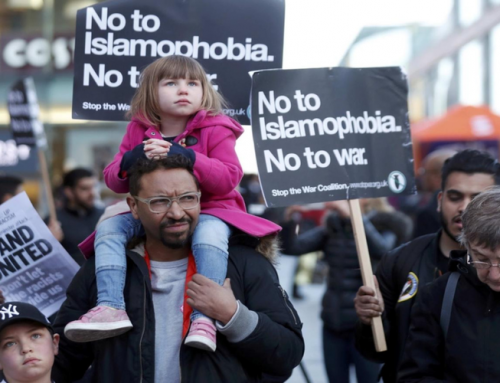Combatting terrorism is a common objective of governments and communities alike. In fact, it is one of the areas of civic engagement that garners the most consensus, with only extremists objecting to it. Yet, it is a highly contentious issue even among those who understand and support it as a necessary pursuit. While the idea of countering terrorism gains near unanimous approval, it is the process by which that goal is achieved that is a matter of tremendous debate. The fault lines that prevent the development of an optimal approach include imprecise terminology, questionable methods and incoherent tactics and strategies.
A key challenge in countering terrorism is the lack of agreement of a definition of terrorism. While there may be some differences among affected countries, there is even variation within a particular country and its relevant government agencies as to the scope of what constitutes terrorism. Generally, terrorism is construed to be an act of violence designed to inflict both physical and psychological harm upon an innocent, civilian population, motivated by political and/or ideological factors. While many may agree with this definition, realistically, the application of counterterrorism measures often are reduced to acts of violent extremism committed only by members of certain religious communities or ethnic backgrounds. This creates the perception from these communities that they are being specifically targeted for who they are, or what they believe, rather than surgically focusing upon the violent, criminal act and those who commit them. In addition, members of the community, particularly the youth, a segment that is disproportionately perceived to be a problematic and potentially dangerous group, has begun to internalize psychologically that they are terrorists or potential extremists even though they may not exhibit any anti-social or radical tendencies; they feel as though they are constantly under surveillance and suspicion. They begin to perceive themselves as little more than a security problem rather than as a potentially productive member of society.
Oftentimes, governments that are engaged in counterterrorism activities criticize communities for their inability to discover and uncover potential or actual terrorists within their ranks. This attitude creates an unreasonable burden and misperception on these communities as it suggests that 1) there are in fact terrorists present, 2) that the community has the ability to identify such individuals and 3) that the community is intentionally refusing to divulge the identity of the potential suspects to the appropriate authorities, in effect, harboring terrorists. Such misperceptions serve as justification to place the entire community under enhanced surveillance and scrutiny and legitimize the enactment of measures that may impinge upon civil rights and civil liberties. Ironically, the overwhelming evidence in this field suggests that the sites of surveillance very rarely are locations where radicalization occurs or where acts of terrorism are plotted. Rather, extremism acts tend to be devised over the internet and via social media, not mosques or businesses.
Surveillance of a community in the name of countering terrorism includes the impingement upon the privacy of individuals, organizations and institutions for the community. Mosques, people’s homes and businesses have all been the target of wiretapping and even the infiltration of undercover informants, oftentimes of the same ethnic and/or religious identity as the attendees or members. While it is questionable as to how many acts of terrorism have been averted by such measures, as the authorities are reluctant to divulge such information, there has emerged a general community suspicion that informants could be anywhere and any person could in fact be a government informant, especially if that individual is new to the community. The result is a sense of fear and paranoia that pervades the community and varies only in its severity and emotional anxiety.
One tactic employed by authorities to combat terrorism while fostering community relations has been an effort of outreach and engagement. This may take the shape of interacting with community leaders, in essence “deputizing” them to be liaisons with the authorities and to explore the community without the authorities having to maintain a visible, intrusive presence. Again, such practices rarely bear any correlation to the successful prevention of terrorism, but it does create a great deal of antagonism, where individuals who participate in such programs, often esteemed leaders with good reputations, become viewed as collaborators and are discredited by the community itself.
There are two elements required for an effective counterterrorism plan. First, circumstances and exigencies require a tactical approach that focuses on security measures. Given the potential harm caused by an act of violent extremism, preventative methods must leverage all legal avenues available in a manner that do not overreach and encroach upon long-standing civil liberties and individual rights. The threat to the public caused by violent extremism should not be matched by a threat to the rights of the very public in whose name such measures are deployed. At the same time, however, security measures must be tactical, not strategic. They can and all too often become grounds for securitizing an entire group of individuals, as justification to profile segments of the public based upon religious, ethnic and cultural classification. Moreover, such security measures do little, if anything, to address the underlying causes and influences that draw people toward engaging in violent extremism.
Thus, the second aspect of an executive counterterrorism plan must have a focus on strategic issues that need to be rectified. Such challenges include structural inequalities, poverty, lack of access to education and/or meaningful employment, racism, corruption and the absence of basic human dignity. By definition, these issues demand a long-term strategy to rectify as they involve cultural as well as logistical shifts for affected societies. The inability, or unwillingness, to address these matters will impede all efforts to eradicate terrorism as it fails to acknowledge the underlying causes of the problem.
Governments, communities and individuals are in general agreement of the priority to be given to countering terrorism. The successful prevention and prosecution of extremist acts, however, requires greater coordination, transparency and consensus as to the strategies that need to be employed.
*Dr. Saeed A. Khan is Professor at Wayne State University, U.S.A.





